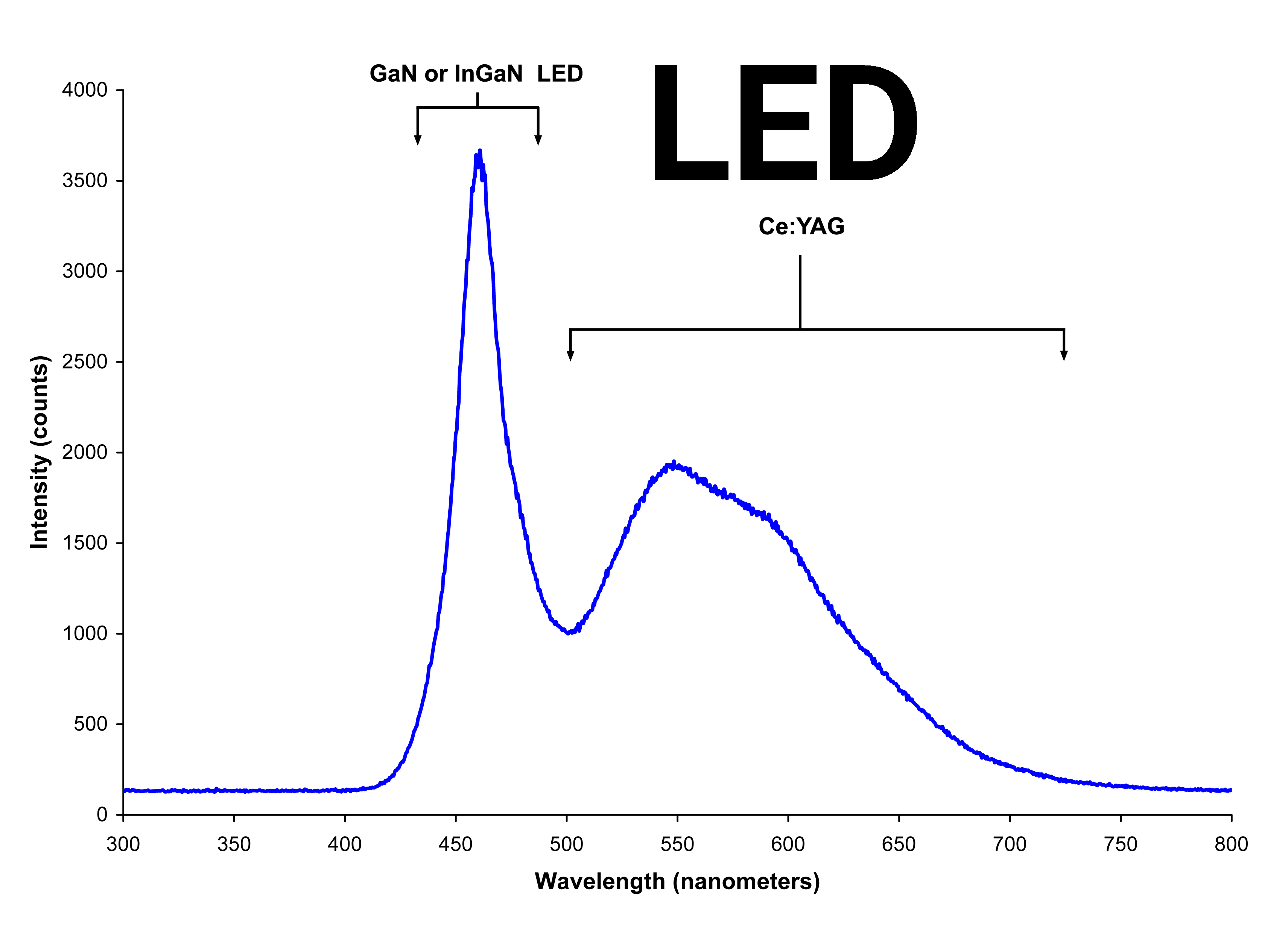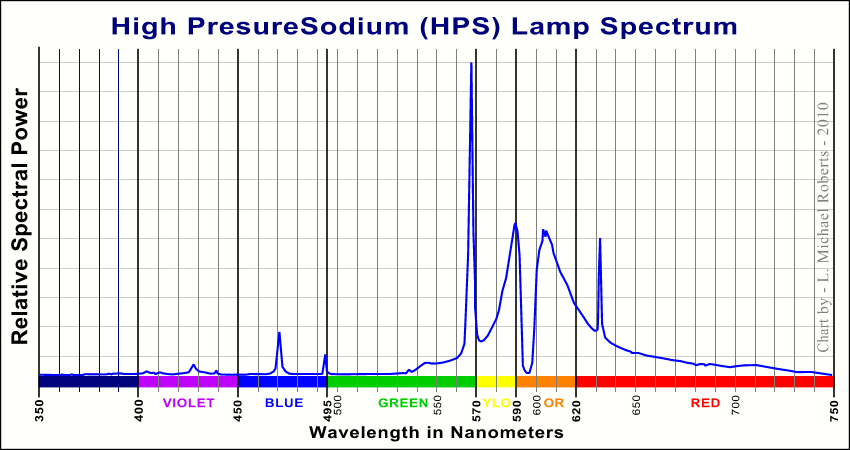Why's it important?
In my website, you've probably noticed that I don't like LED streetlights, specifically outdoor LEDs in general. One of the main points I have to make is that LED lighting contains a significant amount of blue light. This statement is supported by facts! Let's take a look at them.
The facts
 Take a look at the photo labeled "LED" and measure the amount of blue light relative to the green, yellow, and red areas. Now, take a look at the other photo labeled "HPS." You might notice a lower amount of blue light in the HPS graph compared to the LED's, relative to other colors.
Take a look at the photo labeled "LED" and measure the amount of blue light relative to the green, yellow, and red areas. Now, take a look at the other photo labeled "HPS." You might notice a lower amount of blue light in the HPS graph compared to the LED's, relative to other colors.  After comparing them, we can say that LED really does have a lot of blue light.
After comparing them, we can say that LED really does have a lot of blue light.Warm and cozy...maybe not
As I said earlier, blue light has a few effects on vision. One of the most significant effect is the impact it has on sleeping. It is well known that blue light interferes with your circadian rhythm. You might say, "Why don't we just use warmer LEDs instead?" and that would actually be an OK idea. However, I can think of a few reasons why it isn't popular for street lighting, and here they are:
1. Warmer light is more inefficient than cooler light. This can be seen when comparing LED fixtures' datasheets.
2. Warm LED light is still worse than HPS regarding the blue light levels.
3. Sometimes/often, it costs more than regular old cool-white LED. Because of this, it's off-putting to people who are looking for the lowest cost possible.
I can see the light!
A common argument I see when pro-LED people talk about white light is that it can be seen easier at low light levels. However, what they're not telling you is that this is only a half-truth. But why?
The reason it is only a half-truth is that while there's no doubt that LED can be seen well with scotopic vision, this is deemed irrelevant when we consider that outdoor lighting uses much higher light levels. To show you that it's true, take a look at the top of page 2 of this paper on LEDs. That chart shows when different kinds of vision is actually used. A quick look shows us that pure scotopic vision ends halfway between .001 and .01 cd/m^2. Translated, that equals .001 and .01 lumens per square meter. Looking farther to the right, the chart shows that photopic vision is the sole vision source at approximately 10 cd/m^2. How much is that? It's not much, considering that these units convert to 10 lux. A typical streetlight makes around 1 fc on the road, and since 1 fc converts to a little over 10 lux, this isn't a very high bar to reach for LED's big advantage to dissolve away.
It gets worse...
If all that wasn't enough, maybe this will. Considering the assumption of white light being visible under low light levels, this means the light trespass from LED is greater than that of HPS or similar light sources because the light can be seen easier. Ouch!